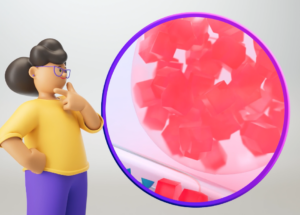 Phase 2 of the Level2 Method is all about seeing your glucose. As we like to say at Level2, if you can’t see your glucose, you can’t change it. This means you should be wearing your continuous glucose monitor (CGM) and connected to Level2.
Phase 2 of the Level2 Method is all about seeing your glucose. As we like to say at Level2, if you can’t see your glucose, you can’t change it. This means you should be wearing your continuous glucose monitor (CGM) and connected to Level2.
The Goal for This Phase:
Use CGM to identify foods or situations that cause glucose to sharply rise (>180 mg/dL)
and wear CGM minimum of 10 days. You may even wear CGM less as you learn your body more.
Things to Learn:
What happens in your body if you have type 2 diabetes?
Why Should You Pay Attention to Your Glucose After Eating
Why is Blood Glucose Elevated in the Morning?
Important Terms & Concepts:
- Glucose Changes – Noticing changes in blood glucose related to what you eat and drink, how you move, how well you sleep, how much stress you experience, etc.
- Symptoms of High Blood Glucose (Hyperglycemia) – increased thirst/ hunger, increased frequency of urination, blurry vision, nausea, headaches.
- Symptoms of Low Blood Glucose (Hypoglycemia) — When glucose falls below 70 mg/dL, you may be experiencing a dangerous condition called hypoglycemia. If you have repeated hypoglycemic episodes as you observe your CGM, contact your care team immediately. If you are taking medications, they may need to be adjusted. (Learn more about hypoglycemia and hyperglycemia in these Safety Warnings.)
How to Use Your CGM in this Phase:
FreeStyle Libre Users
- Go to the home screen in the FreeStyle Libre2 or FreeStyle Libre 3 app.
- Notice times where your glucose levels rise above 180 mg/dL.
(above the top of the green area.)
See the graphics below for guidance:
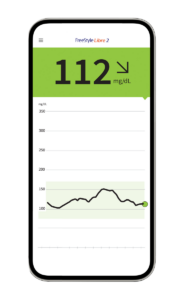
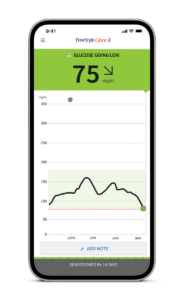
Next, set your alarms:
Set the high blood glucose alarm in the app to alert you when your glucose levels go above 180 mg/dL. This is a customizable alert that can be set between 120-400 mg/dL.. Here’s how:
- Tap the menu icon in the top left corner of the app.
- Tap Alarms.
- Tap High Glucose Alarm and turn on alarm.
- To adjust the value for this alarm, select the option When glucose goes above.
- Scroll and set the value to 180 mg/dL. Tap Save.For more guidance on setting alarms, see the graphics below:
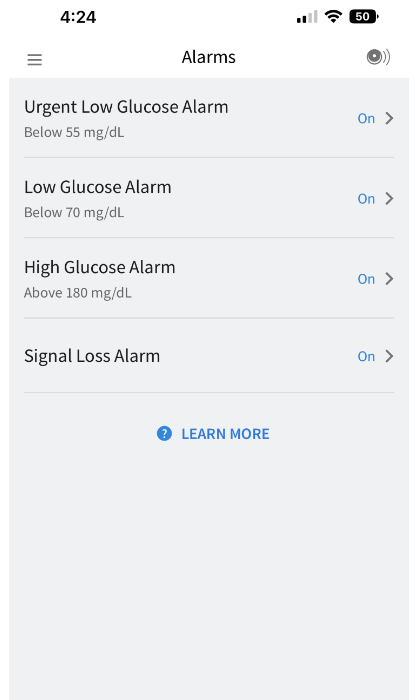
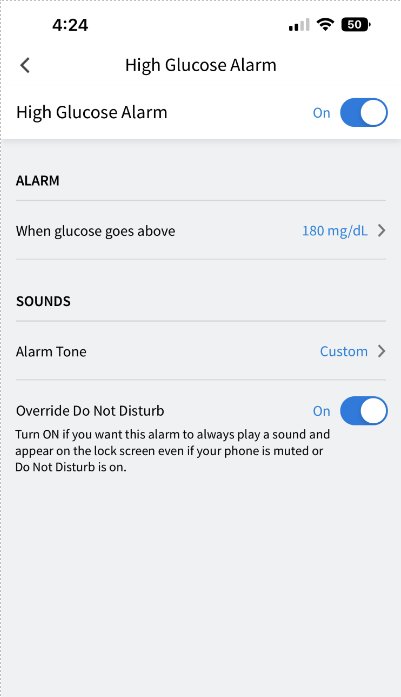
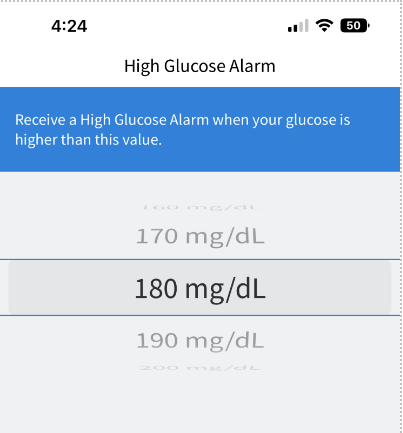
Dexcom Users
- Find the Daily Glucose Graphic on the Dexcom G6 app.
- Flip your phone horizontally to see 24 hours of glucose data.
- Notice times where glucose levels rise above 180 mg/dL (use the key to the side of the numbers on G6 as a reference).
See the graphics below for guidance:
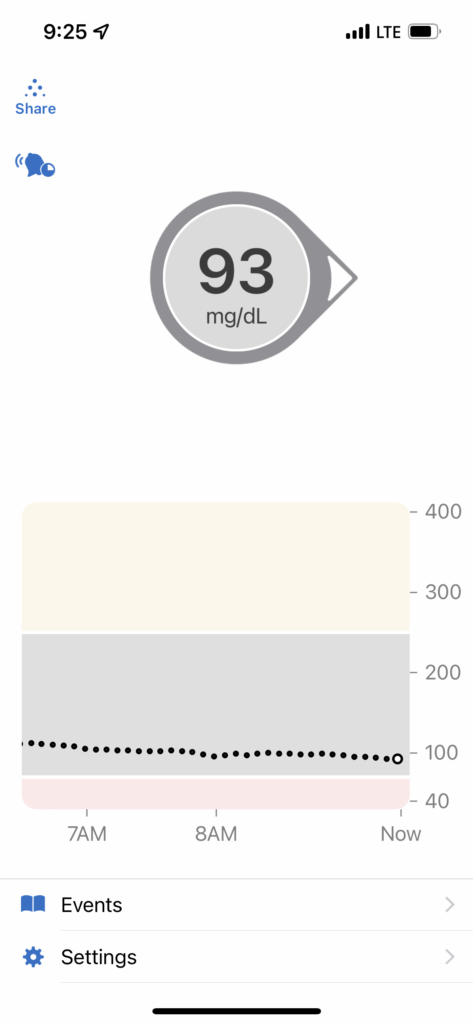
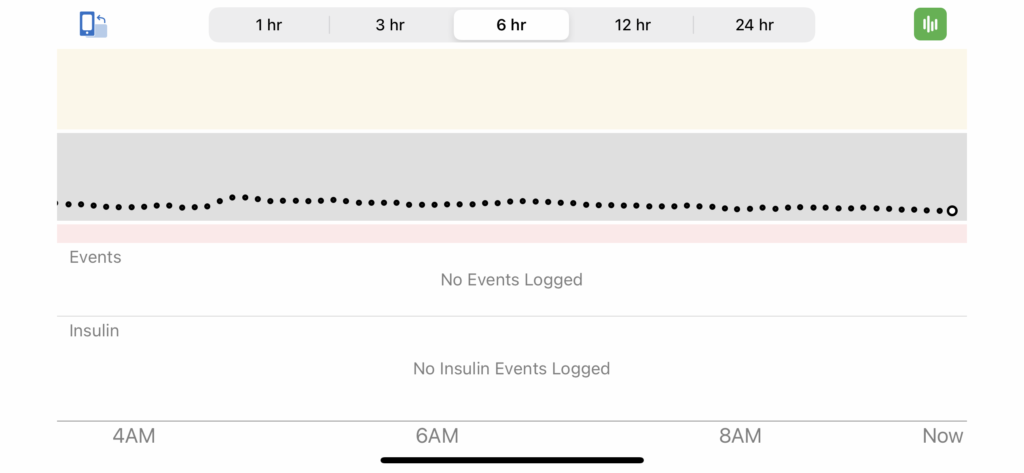
Set the high blood glucose alert on the G6 app. Here’s how:
Click settings ->Alerts -> High -> Turn high alert -> Notify me above 180 mg/dL -> Repeat-never
See the graphics below for more guidance:
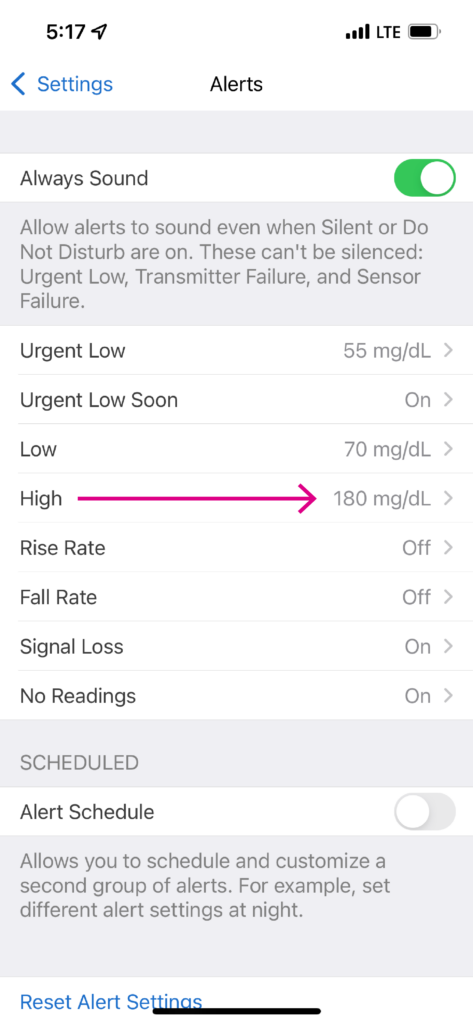
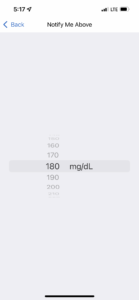
Aug. 07 2024